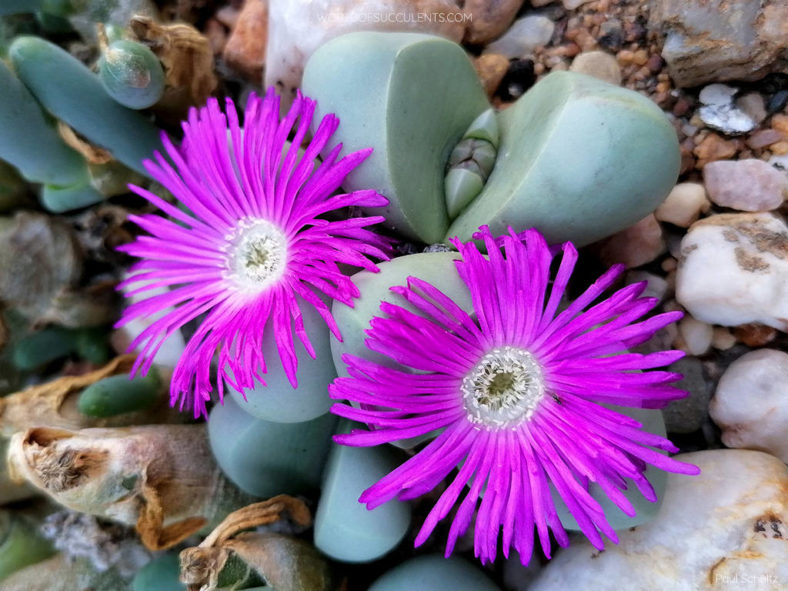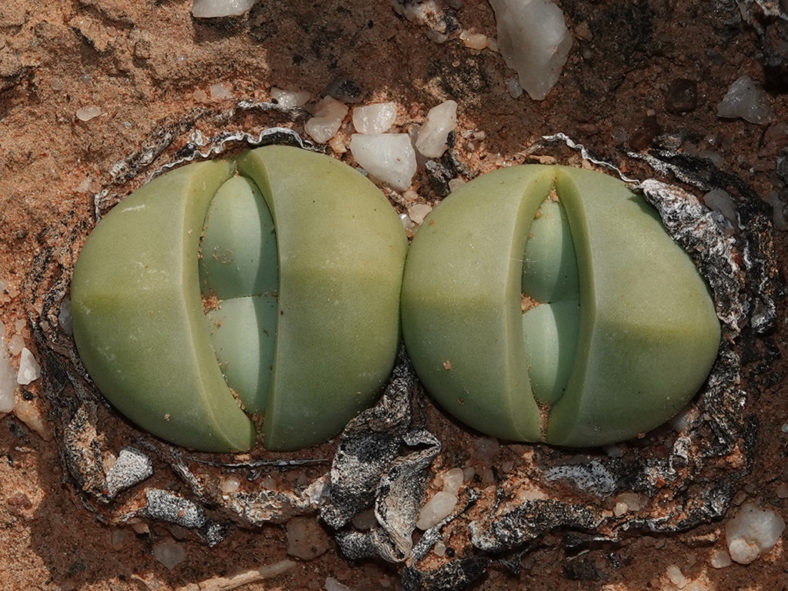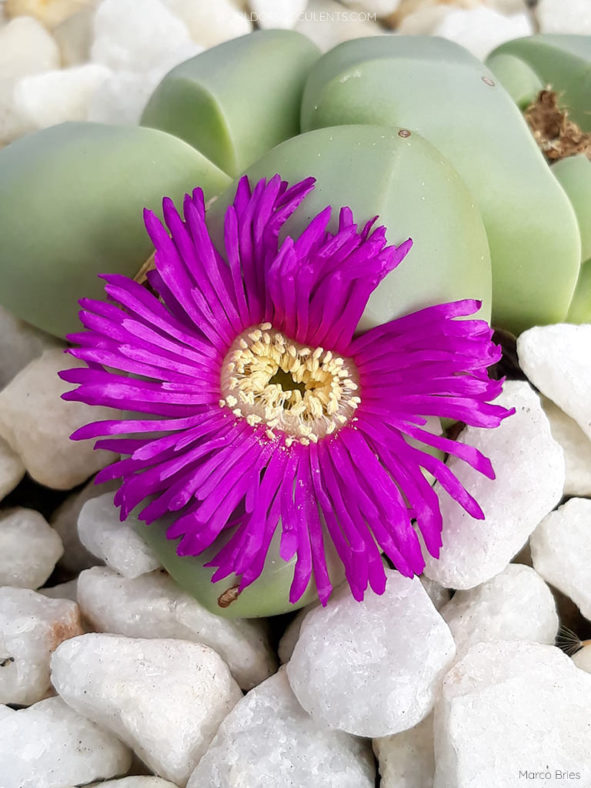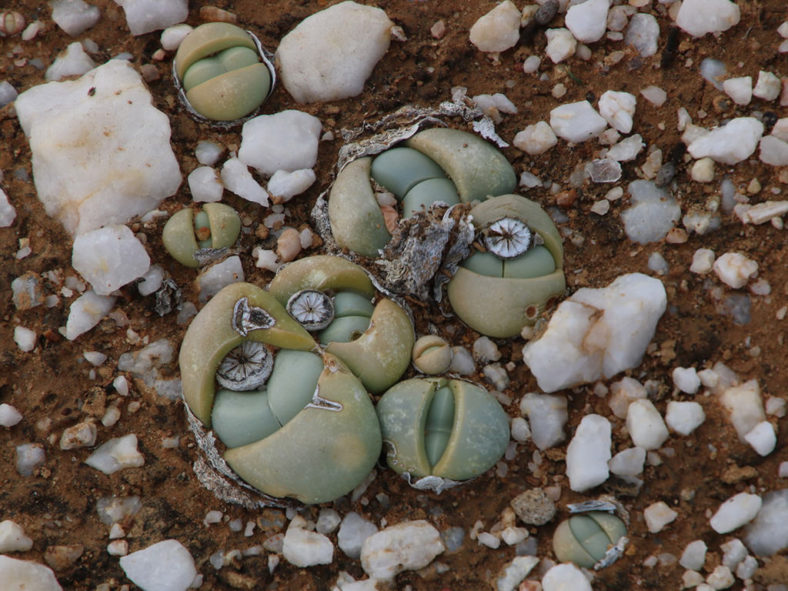Scientific Name
Argyroderma delaetii C.A.Maass
Common Name(s)
Baby's Bottom, Living Stones, Silver Stones, Stone Plant
Synonym(s)
Argyroderma roseum var. delaetii, Argyroderma schuldtii
Scientific Classification
Family: Aizoaceae
Subfamily: Ruschioideae
Tribe: Ruschieae
Genus: Argyroderma
Etymology
The specific epithet "delaetii" (pronounced "del-ay-tee-eye") honors Frans (Frantz) de Laet (1866–1928), a Belgian succulent plant expert and horticulturist in Kontich.
Origin
Argyroderma deletion is native to South Africa. It grows on flats or slopes with quartz pebbles in Van Rhynsdorp, Western Cape.
Description
Argyroderma delaetii is a dwarf succulent that usually forms a single body, rarely 2 or 3, that consists of two opposite, semi-elliptical leaves divided by a deep fissure. It can grow up to 1.2 inches (3 cm) tall and is usually sunken into the ground in its native habitat. The upper surface can reach up to 2 inches (5 cm) in length and 1.2 inches (3 cm) in width. The leaves are thick, fleshy, gray-green to blue-green. Each year, a new pair of leaves appears from the fissure, disintegrating after 1 or 2 seasons. The old leaves dry out and wither gray.
The solitary flowers appear in the fall and can reach a diameter of 2 inches (5 cm). They vary in color from magenta, red, or pink to yellow or white. The fruit is a 14- to 24-locular capsule.
This species is very variable. Even plants from the same seed capsule may produce flowers in different colors.

How to Grow and Care for Argyroderma delaetii
Light: This succulent needs bright light but does not like too much direct sun. The perfect spot to grow your A. delaetii indoors is a sunny windowsill with 4 to 5 hours of direct sunlight during the early part of the day and partial shade during the afternoon.
Soil: A. delaetii thrives best in porous soil mixes that allow water to drain away quickly. You can use a commercial potting mix specially designed for succulents or make your own.
Temperature: High temperatures are not a problem for this plant as long as there is plenty of fresh air, but it is not a cold-hardy succulent. A. delaetii can withstand temperatures as low as 35°F (1.7°C). USDA Plant Hardiness Zones 10b to 11b, 35°F to 50°F (1.7°C to 10°C).
Watering: A. delaetii requires little or no water when it goes dormant, usually in summer. When it begins to grow again in fall, it is safe to water deeply, allowing the soil to dry between waterings. If leaves start to wrinkle during active growth, your plant needs water.
Fertilizing: This small succulent is a light feeder and does not need fertilizer if repotted every two years.
Repotting: This small succulent will stay happy in the same pot for several decades. The common reason for repotting is to divide or to give the plant a larger growing space. The best time to repot A. delaetii is at the beginning of the active growth period, but the repotting can be done almost any time while the plant is actively growing.
Propagation: This species is usually grown from seeds. It is also easily propagated by division. The best time to divide A. delaetii is in late summer before it begins to break dormancy. Sow the seeds in fall in a pot with a well-drained soil mix.
Learn more at How to Grow and Care for Mesembs.
Toxicity of Argyroderma delaetii
A. delaetii is considered non-toxic to humans and pets.
Links
- Back to genus Argyroderma
- Succupedia: Browse succulents by Scientific Name, Common Name, Genus, Family, USDA Hardiness Zone, Origin, or cacti by Genus
Photo Gallery


